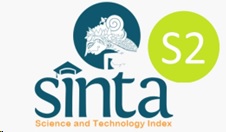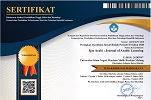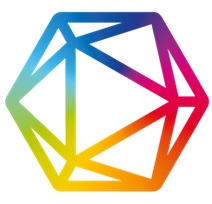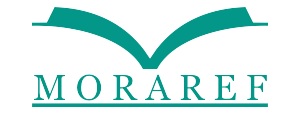Acquiring Arabic As A Second Language Among Senior High School Students
Abstract
Keywords
References
Abdeldeen, M., & Fu, Y.-H. (2022). The Challenges of Arabic Language Acquisition to the Non-Native Speakers in National: from the Perspective of the Current Students Human and Social Sciences, 49(3), 2022. https://doi.org/10.35516/hum
Abdulgader, M. A., & Hamza, A. A. (n.d.). Cultural Understanding and Language Translation. www.Suj.sebhau.edu.ly
Adelstein, Ana et.al. (1998). First Language Acquisition in Adolescene : Evidence for a Crictical Period for verbal Language Development, the article taked from University Waterloo Canada.
Alhirtani, N. A. K. (2018). The Influence of Arabic Language Learning on Understanding of Islamic Legal Sciences—A Study in the Sultan Idris Education University. International Education Studies, 11(2), 55. https://doi.org/10.5539/ies.v11n2p55
Arifin, Z., Ramadhanti Febriani, S., Desrani, A., Mahmudi, A., & Guettaoui Bedra, K. (2022). Critical Tracing of Arabic Language Acquisition in Indonesian Context. Izdihar : Journal of Arabic Language Teaching, Linguistics, and Literature, 5(2). https://doi.org/10.22219/jiz.v5i2.20745
Arikunto, Suharismi. (1998). Prosedur Penelitian Suatu Pendekatan Praktek, Jakarta: Rineka Citra.
Azhar N. Al- Sulami, Wafaa H. Al- Owaydhi, A. N. A.-S. W. H. A.-O. (2022). Strategies for Teaching the Arabic Language in light of its characteristics and social functions: 6(4), 134–150. https://doi.org/10.26389/ajsrp.r160221
Belbouah, A., Khotbi, T., & Bouguerba, T. (2023). Challenges of Writing in Arabic as a Foreign Language Context: Case of the Spanish School in Rabat. European Journal of Contemporary Education and E-Learning, 1(1), 3–19. https://doi.org/10.59324/ejceel.2023.1(1).01
Bihari Dash, Dr. B. (2022). Significance of Globalisation and English Language. International Journal on Studies in English Language and Literature, 10(5), 10–16. https://doi.org/10.20431/2347-3134.1005002
Cakrawala. (2007). Artikel yang berjudul pemerolehan bahasa kedua, www. Artikel Cakrawala TNI AL.com, diakses 20 Maret 2020.
Castellucci, G. A., Guenther, F. H., & Long, M. A. (2022). Annual Review of Neuroscience A Theoretical Framework for Human and Nonhuman Vocal Interaction. https://doi.org/10.1146/annurev-neuro-111020
Chaer, Abdul. (2009). Psikolinguistik Kajian Teoritik, Cet. Pertama, Jakarta: PT. Rineka Cipta.
Chaika, O. I. (2020). Communication Strategies in Instruction / Acquisition of Languages for Specific Purposes. Mìžnarodnij Fìlologìčnij Časopis, 11(2), 110–116. https://doi.org/10.31548/philolog2020.02.110
Cheney, D. L., & Seyfarth, R. M. (2018). Flexible usage and social function in primate vocalizations. Proceedings of the National Academy of Sciences of the United States of America, 115(9), 1974–1979. https://doi.org/10.1073/pnas.1717572115
De Stefani, E., & De Marco, D. (2019). Language, gesture, and emotional communication: An embodied view of social interaction. In Frontiers in Psychology (Vol. 10, Issue SEP). Frontiers Media S.A. https://doi.org/10.3389/fpsyg.2019.02063
Ding, Y. (2021). Understanding the Process of Second Language Acquisition. Review of Educational Theory, 4(4), 29. https://doi.org/10.30564/ret.v4i4.3510
Dulaj, F. (n.d.). Language learning from children at an early age. www.techniumscience.com
Durga, S., & Mehrotra, V. (2022). Communication and its vital role in human life. International Journal of Health Sciences, 5940–5948. https://doi.org/10.53730/ijhs.v6ns5.10005
Erlita, Y. (n.d.). Language Function In Social Life And Its Influences.
F. Otte, M. (2016). What is the Difference Between a Definition and a Concept? Science Journal of Education, 4(5), 159. https://doi.org/10.11648/j.sjedu.20160405.14
Fabbro, F., Fabbro, A., & Crescentini, C. (2022). The Nature and Function of Languages. Languages, 7(4). https://doi.org/10.3390/languages7040303
Faxritdinovna, T. O. (2021). The possibilities of using textbooks during mother tongue classes. ACADEMICIA: An International Multidisciplinary Research Journal, 11(5), 408–417. https://doi.org/10.5958/2249-7137.2021.01411.7
Hamdan, J. M., Hamdan, H. J., Hamdan, W. J., & Alkhadra, W. A. (2023). The Pragmatic Functions of wa in Jordanian Arabic: A Corpus-based Study. Psycholinguistics , 34(2), 132–155. https://doi.org/10.31470/2309-1797-2023-34-2-132-155
Juma RAHEEM, K. (2018). Raheem The Role of First Language on The Second Language Acquisition 112. In International Journal of Kurdish Studies (Vol. 4, Issue 1). http://www.ijoks.com
Karlik, M. (2023). Exploring The Impact Of Culture On Language Learning: How Understanding Cultural Context And Values Can Deepen Language Acquisition. International Journal of Language, Linguistics, Literature and Culture, 02(05), 05–11. https://doi.org/10.59009/ijlllc.2023.0035
Khuryati, A., Ardinal, E., & Alamin, N. (2023). Arabic Behaviour: Escalation of Ability to Speak Arabic. In Jurnal Ilmu Bahasa Arab dan Studi Islam (Vol. 6, Issue 1).
Liang, X., Lu, Y., & Martin, J. (2020). A Review of the Role of Social Media for the Cultural Heritage Sustainability. https://doi.org/10.20944/preprints202012.0618.v1
Lighfoot, David. (2010). Language acquisition and language change, Wiley Interdiciplinary Review Cognitive Science.
Lindquist, K. A., Satpute, A. B., & Gendron, M. (2015). Does Language Do More Than Communicate Emotion? Current Directions in Psychological Science, 24(2), 99–108. https://doi.org/10.1177/0963721414553440
Liu, R., Yang, R., Jia, C., Zhang, G., Zhou, D., Dai, A. M., Yang, D., & Vosoughi, S. (2023). Training Socially Aligned Language Models on Simulated Social Interactions. http://arxiv.org/abs/2305.16960
M Smith, A. D., Skarabela, B., & Tamariz, O. (2010). Exploring the Nature of a Systematicity bias: An experimental study. 289–296. https://doi.org/10.1142/7624
Mirza, E., Shafi, S., & Ahmed, F. (2022). (De) Constructing The Correlation Between First Language Acquisition And Second Language Learning. Global Social Sciences Review, VII(IV), 56–63. https://doi.org/10.31703/gssr.2022(vii-iv).07
Muhadjir, Noeng. (1996). Metodologi Penelitian Kualitatif, (Yogyakarta: Penerbit Rake Sarasisn).
Mohammed, I. J. (2020). Learner Differences in Second Language Acquisition. Journal of Tikrit University for Humanities, 27(8), 43–55. https://doi.org/10.25130/jtuh.27.8.2020.22
Prastowo, Andi. (2011). Metode Penelitian Kualitatif dalam Perspektif Rancangan Penelitian, (Yogyakarta: Ar-Ruzz Media).
Prayogi, R. D., & Shobron, S. (2020). Arabic as Second Language of Educated Generation. Ittishal Educational Research Journal, 1(1), 13–25. https://doi.org/10.51425/ierj.v1i1.2
Purba, N. (2018). THE ROLE OF PSYCHOLINGUISTICS IN LANGUAGE LEARNING AND TEACHING. Tell Journal, 6(1).
Salvan, P., Arichi, T., Vidaurre, D., Donald Tournier, J., Chew, A., Counsell, S. J., David Edwards, A., & Thomas, S. (n.d.). The network properties of the brain at the time of normal birth support the acquisition of language processing. https://doi.org/10.1101/282673
Shamsuddin, S. Mohd., H. Asmad, A. Bin, & Binti Hj. Ahmad, S. S. (2018). Arab dialects that formed the classical Arabic, in which the Holy Qur’an was revealed. Advances in Social Sciences Research Journal, 5(9). https://doi.org/10.14738/assrj.59.5217
Shishova, E. O. (2020). Psychological factors of successful foreign language acquisition. XLinguae, 13(4), 142–151. https://doi.org/10.18355/XL.2020.13.04.10
Setiadi, Alif, “ Bahasa dan Berbahasa Perspektif Psikolinguistik” dalam at –Ta’dib Hurnal Kependidikan Islam, Volume 04 (Nomor 2 tahun 1492 H).
Sokip. (2020). Overcoming the problem of learning foreign language skills in the classroom. Universal Journal of Educational Research, 8(2), 723–729. https://doi.org/10.13189/ujer.2020.080246
Suharsimi, Arikunto. (1993). Prosedur Penelitian: Suatu Pendekatan Praktik, (Jakarta: Rineka Cipta.
Surahmad, Winarno. (1975). Dasar Dan Teknik Research, CV Tarsito Bandung.
Trueswell, J. C. (2023). Language acquisition and language processing: Finding new connections. In Language Acquisition (Vol. 30, Issues 3–4, pp. 205–210). Routledge. https://doi.org/10.1080/10489223.2023.2216689
Usman, A. H., Mahmud, A. F., Daud, A., & Dahlan, S. (n.d.). Language As A Social Instrument. 18(2). https://doi.org/10.33387/Edu
DOI: https://doi.org/10.18860/ijazarabi.v8i1.28404
Refbacks
- There are currently no refbacks.
Copyright (c) 2025 Zeiburhanus Saleh, Nurul Murtadlo, Abdul Wahab Rosyidi, Mokhammad Miftakhul Huda
License URL: https://creativecommons.org/licenses/by-sa/4.0/












